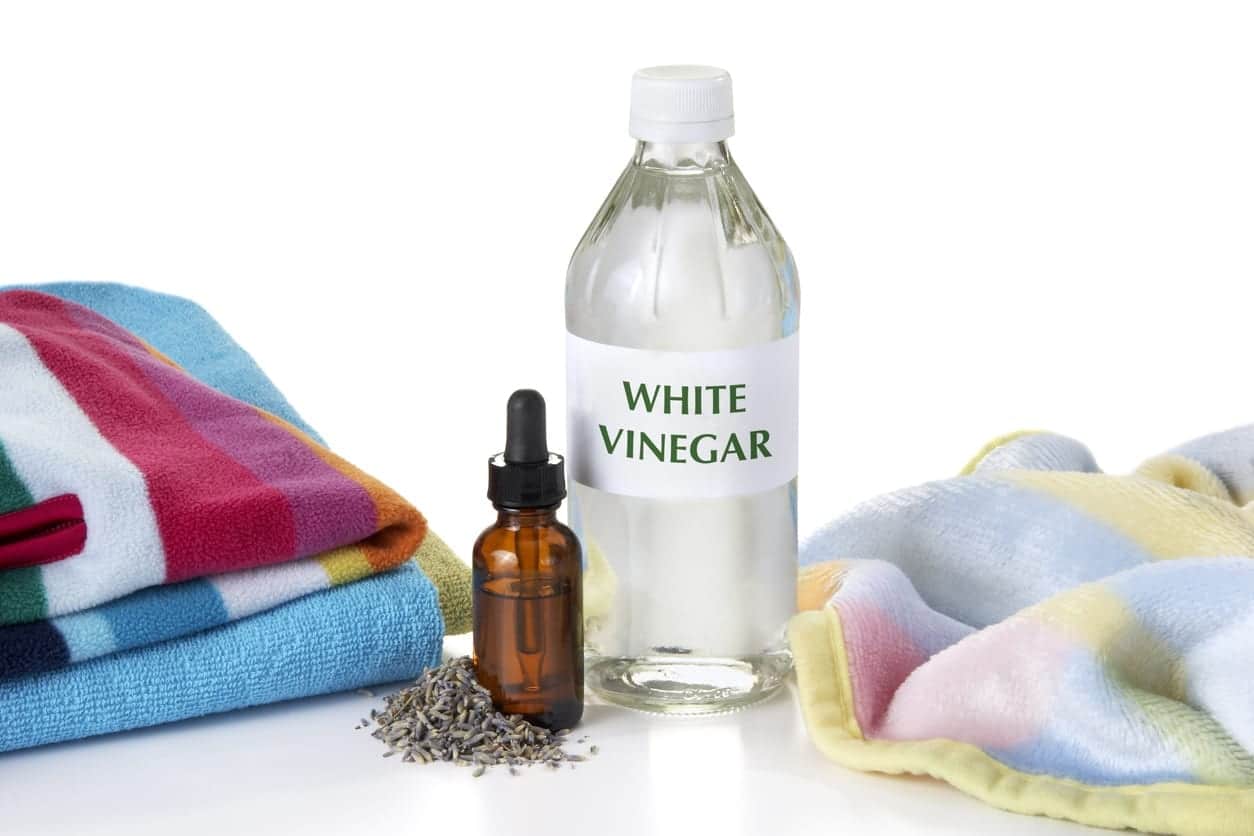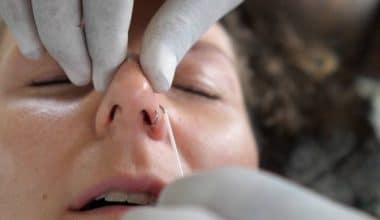Micro Suede couches are popular for their luxurious feel and stylish appearance, but they also require proper care to maintain their beauty overtime. Cleaning a suede couch may seem like a daunting task, but with the right techniques and a bit of know-how, you can keep your couch looking fresh and inviting.
In this step-by-step guide, we will walk you through the process of cleaning your micro suede couch to ensure it stays in top condition.
Table of contents
What is a Micro Suede Couch?
Micro suede, often referred to as microfiber, is a synthetic fabric that mimics the look and feel of suede leather. It is a popular upholstery material for furniture, including couches and sofas. Microsuede has gained popularity because of its soft texture, durability, and relatively easy maintenance compared to genuine suede.
Here are some key characteristics of micro suede couches:
- Material Composition: Microsuede is typically made from polyester, nylon, or a blend of these synthetic fibers. The fibers are finely woven to create a fabric that closely resembles the softness and appearance of natural suede.
- Soft Texture: One of the main attractions of micro suede is its luxurious and soft feel. The fine fibers create a smooth surface that is pleasant to touch, providing a comfortable and cozy seating experience.
- Stain Resistance: It is often treated with stain-resistant finishes, making it more resistant to spills and stains compared to natural fabrics. This feature makes it a practical choice for households with children or pets.
- Hypoallergenic: Because microsuede is synthetic, it is less likely to harbor allergens such as dust mites. This makes it a suitable choice for individuals with allergies or respiratory sensitivities.
- Durability: It is known for its durability and resistance to wear and tear. It can withstand regular use without showing signs of extensive damage, making it a long-lasting choice for furniture upholstery.
- Variety of Colors and Styles: Microsuede is available in a wide range of colors and patterns, allowing consumers to choose a couch that complements their decor and personal style.
Read Also: How to Get Mold Out of Clothes | Full Guide
Types of Suede
It is created from the underside of animal hides, particularly those of cows, goats, and sheep. The term ‘suede’ is often associated with a specific texture rather than a particular type of leather.
Here are some common types of suede, each with its unique characteristics:
- Cowhide Suede:
- Obtained from the skin of mature cows, cowhide suede is durable and commonly used for various leather goods, including jackets, shoes, and accessories. It has a smooth surface with a velvety texture.
- Goatskin Suede:
- Suede made from goatskin is lightweight and supple. It is known for its fine grain and is often used for high-end leather products such as gloves, jackets, and luxury accessories.
- Sheepskin Suede:
- Suede derived from sheepskin is exceptionally soft and lightweight. It is commonly used in the fashion industry for garments, accessories, and footwear. Sheepskin suede has a finer nap compared to other types.
- Pigskin Suede:
- Pigskin suede, sourced from pigs, is more affordable than other types of suede. It has a coarser texture and is often used for gloves, casual footwear, and lower-cost leather goods.
- Calfskin Suede:
- Suede made from calfskin, the hide of young cattle, is known for its fine texture and softness. It is commonly used in high-quality leather products, including shoes, bags, and accessories.
- Split Suede:
- Split suede is obtained from the inner layer of a hide after the top-grain leather is separated. While it is still suede, it tends to be less durable and has a slightly rougher texture compared to full-grain suede.
- Nubuck:
- While not technically suede, nubuck is similar in appearance and texture. It is a type of top-grain leather that has been buffed or sanded to create a soft, velvety surface. Nubuck is more durable than traditional suede but still requires careful maintenance.
What Materials Do I Need to Clean a Micro Suede Couch?
Before you start cleaning your micro suede couch, gather the following materials:
- Vacuum Cleaner with Upholstery Attachment: Remove loose dirt and debris from the surface.
- White Vinegar: Acts as a natural cleaner and helps remove stains.
- Rubbing Alcohol: Effective in lifting stubborn stains.
- Distilled Water: Preferable to tap water to avoid mineral deposits.
- Soft, White Microfiber Cloth: Ideal for blotting and cleaning without causing damage.
- Soft Bristle Brush: Helps to restore the fabric’s texture after cleaning.
- Spray Bottle: Used for applying cleaning solutions evenly.
- Clean Towels: To absorb excess moisture during the cleaning process
Read Also: How to Get Rust Off Stainless Steel
Full Guide on How to Clean a Micro Suede Couch
Step 1: Vacuum the Couch
The first and crucial step in cleaning your microsuede couch involves the use of a vacuum cleaner equipped with an upholstery attachment. This initial phase sets the stage for a thorough cleaning process, ensuring that loose dirt, dust, and debris are effectively removed from the microsuede surface.
Why Vacuum Cleaning?
It is important to vacuum clean your suede couch for the following reasons:
- Surface Debris Removal: Preliminary vacuuming serves as the primary means of eliminating this surface debris, preventing it from embedding further into the fabric during the cleaning process.
- Preventing Abrasion: Vacuuming minimizes the risk of these particles causing friction and potentially damaging the delicate microsuede fibers.
- Enhancing Cleaning Effectiveness: Vacuuming ensures that the cleaning agents can penetrate more effectively, targeting stains and spills without interference from superficial dirt.
How to Perform Vacuuming
- Attach the Upholstery Tool
- Adjust Vacuum Settings
- Thoroughly Vacuum all Surfaces
- Use Crevice Tool for Precision
Step 2: Identify and Test Cleaning Products
After the preliminary vacuuming, the next crucial step in the cleaning process involves identifying and testing cleaning products. Not all cleaning solutions are suitable for microsuede, and it’s essential to select products that effectively remove stains without compromising the integrity of the fabric.
The following are reasons you should test your cleaning products
- Preserving Microsuede Integrity
- Stain-Specific Solutions
- Avoiding Harsh Chemicals
How to Identify and Test Cleaning Products
- Read Manufacturer’s Instructions: Check the care label on your microsuede couch for any manufacturer recommendations or restrictions regarding cleaning products.
- Research Recommended Solutions: Conduct research or seek recommendations from the manufacturer to identify cleaning solutions that are specifically formulated for microsuede. Look for products known for their effectiveness in stain removal without causing damage.
- Perform a Spot Test: Before applying any cleaning solution to the entire couch, perform a spot test on a small, inconspicuous area. This could be on the back or bottom of the couch.
- Check for Residue: After applying the cleaning solution, check for any residue left behind once the spot test area has dried. Residue can affect the overall appearance and feel of the micro suede, so it’s important to ensure that the cleaning product leaves the fabric in its original state.
- Verify Odor: Test for any lingering scents to ensure that the cleaned microsuede retains its neutral or original fragrance.
Step 3: Prepare and Apply the Cleaning Solution
This step involves concocting a cleaning solution and skillfully applying it to eradicate stains and revitalize the fabric. Let’s break down this pivotal stage in the microsuede cleaning journey. Here’s why you need a cleaning solution for your suede couch.
- Stain Removal: A purpose-formulated cleaning solution helps break down and lift these stains without compromising the delicate texture of the fabric.
- Dirt and Grime Dissolution: The cleaning solution aids in dissolving and lifting these particles from the fabric.
- Refreshes Fabric: The cleaning solution contributes to refreshing the overall appearance of the micro suede, revitalizing its color and texture.
How to Prepare and Apply the Cleaning Solution
- Select a Suitable Cleaning Solution: Choose a cleaning solution that is appropriate for micro suede. A mixture of equal parts white vinegar and distilled water is a popular and effective choice.
- Mix the Solution Thoroughly: Ensure that the solution is well-blended to guarantee a consistent cleaning application.
- Spray Lightly and Evenly: Armed with your prepared cleaning solution, lightly and evenly spray the stained or soiled areas of the microsuede couch. Be cautious not to oversaturate the fabric, as excessive moisture can lead to prolonged drying times.
- Work in Sections: To manage the cleaning process effectively, work in small sections. This ensures that you can focus on each area, preventing the cleaning solution from drying prematurely before you’ve had a chance
Read Also: How Dryer Sheets Work ? Full Tips and Guidelines
Step 4: Gently Blot Stains
This step requires a delicate touch, employing the ‘gently blotting’ technique to lift stains without causing further damage to the fabric. Here’s why this step is particularly important in the steps you should take in cleaning the suede couch.
- Preventing Fabric Distortion: Microsuede is prized for its soft and luxurious texture. Aggressive rubbing or scrubbing can distort the fabric’s nap, leading to a change in its appearance and feel.
- Minimizing Absorption: Blotting, as opposed to rubbing, helps prevent excessive moisture from penetrating the fabric. This is crucial to avoid potential water stains or damage to the couch.
- Effective Stain Removal: By applying gentle pressure with an absorbent cloth, you encourage the stain to transfer from the fabric to the cloth, leaving your couch looking clean and refreshed.
- Maintaining Color Integrity: Gently blotting stains minimizes the risk of color transfer, ensuring that your microsuede couch retains its vibrant and consistent appearance.
How to Gently Blot Stains
- Choose the Right Cloth: Go for a soft, white microfiber cloth.
- Apply the Cleaning Solution: If you’ve already prepared a cleaning solution, lightly spray or apply it to the stained area.
- Fold the Cloth: Fold the microfiber cloth into a small square or rectangle, creating a compact and absorbent surface for blotting.
- Gently Press and Lift: Place the folded cloth over the stain and gently press down without rubbing.
- Check and Repeat: Assess the stain after each blotting attempt.
Step 5: Clean the Entire Surface
This step is crucial for maintaining an even appearance, ensuring that your entire couch benefits from the revitalizing effects of the cleaning process.
Let’s see why you should clean the entire surface.
- Uniform Aesthetic Appeal: Cleaning the entire surface guarantees a uniform and consistent appearance across the entire microsuede couch.
- Preventing Water Rings and Streaks: Cleaning the entire surface mitigates the risk of water rings or streaks forming as the couch dries, providing a seamless finish.
- Ensuring Balanced Fabric Texture: Cleaning the entire surface allows for a balanced restoration of the fabric’s texture, preventing any noticeable discrepancies.
Step 6: Allow the Couch to Dry
After the meticulous cleaning process, it’s imperative to exercise patience and allow your microsuede couch to air dry thoroughly. Proper drying is a crucial step in ensuring that the fabric retains its texture, appearance, and overall integrity.
Here’s an in-depth exploration of why allowing the couch to dry is a critical component of the cleaning process:
Importance of Drying
- Allowing the couch to dry completely helps prevent these unwelcome intruders, ensuring a clean and healthy living environment.
- Proper drying helps maintain the texture, softness, and overall quality of the material, ensuring it remains plush and comfortable.
- Allowing the couch to dry naturally reduces the risk of water stains or discoloration that may occur if the fabric is exposed to prolonged dampness. This step contributes to the overall aesthetic longevity of your microsuede furniture.
Step 7: Brushing the Fabric – Restoring the Micro suede Brilliance
After you have given your suede couch a thorough cleaning and it has fully dried, the crucial step of brushing the fabric comes into play. This step is designed to restore the texture, fluffiness, and overall plush feel of the micro suede, ensuring it maintains its luxurious appearance.
What brushing the fabric does to the couch is that it:
- Reinvigorates the Nap
- Prevents Matting
- Enhances Aesthetic Appeal
- Ensures an even and uniform appearance of the microsuede surface
How Often Should I Clean My Suede Couch?
The frequency of cleaning your suede couch depends on several factors, including usage, the presence of stains, and general maintenance practices. Here are some general guidelines to help you determine how often to clean your suede couch:
- Regular Maintenance: Perform routine maintenance at least, once a week to prevent the accumulation of dust, dirt, and debris.
- Spot Cleaning: If you notice any spills or stains, attend to them as soon as possible with appropriate cleaning methods before they set in.
- High-Traffic Areas: These areas are more prone to dirt and oils from skin contact and may require more frequent cleaning.
- Usage Patterns: If your suede couch is heavily used, especially in households with children or pets, you may need to clean it more frequently.
- Seasonal Changes: In environments with distinct seasons, consider cleaning your suede couch more frequently during periods of increased dust or humidity. This can help prevent the accumulation of allergens and maintain a fresh appearance.
Frequently Asked Questions
It’s not recommended to use water directly on suede, as it can leave watermarks and potentially damage the fabric. Instead, opt for dry or water-free cleaning methods designed for suede.
If your suede couch gets wet, blot the excess moisture with a clean, dry cloth immediately. Allow the couch to air dry naturally.
Check the manufacturer’s instructions, but in most cases, it’s best to avoid removing suede cushion covers for washing, as it may affect their shape and color.
It’s advisable to allow your suede couch to fully dry after cleaning before sitting on it.
Conclusion
Regular maintenance and proper cleaning are essential for preserving the beauty of your micro suede couch. By following this step-by-step guide, you can keep your couch looking as good as new and extend its lifespan.
Remember to test any cleaning solution in an inconspicuous area before applying it to the entire couch, and always follow the care instructions provided by the manufacturer. With a little care and attention, your suede couch can remain a centerpiece of comfort and style in your home.
References
- Thespruce.com – How to Clean a Suede Couch
- WikiHow.com – How to Clean a Microsuede Couch
- Durabilitmatters.com – How to Clean Your Suede or Microsuede Couch




